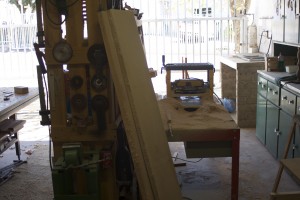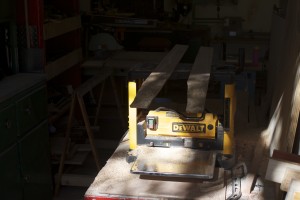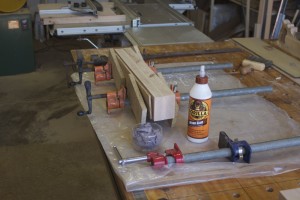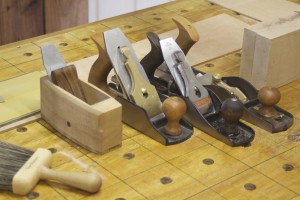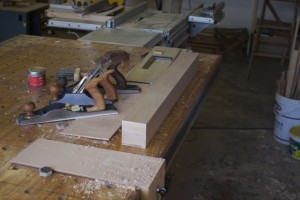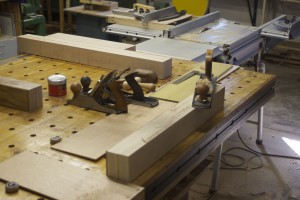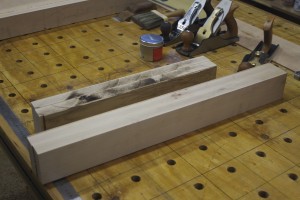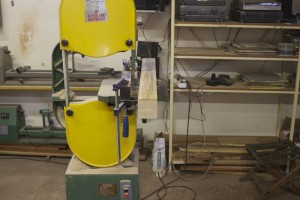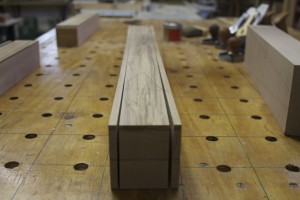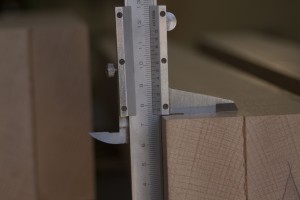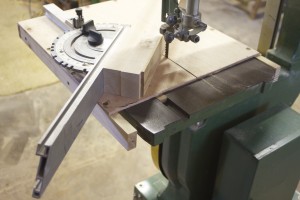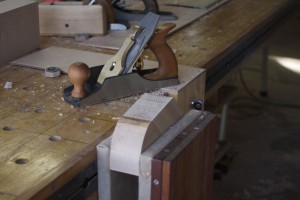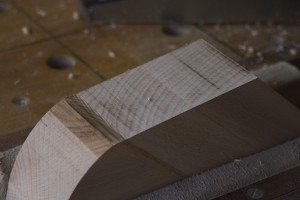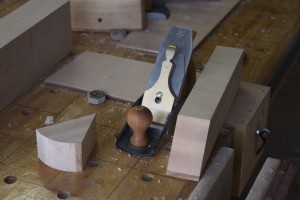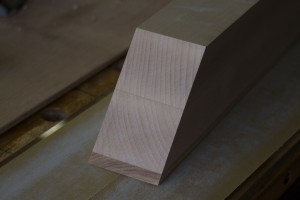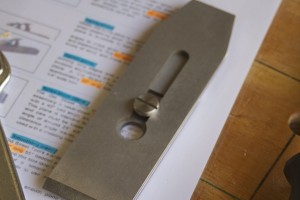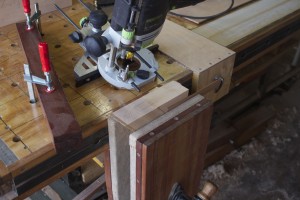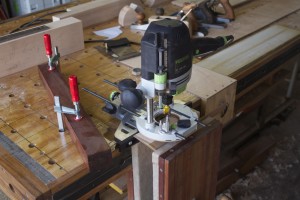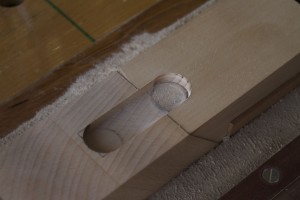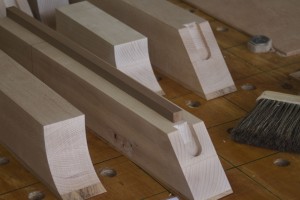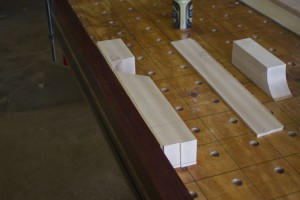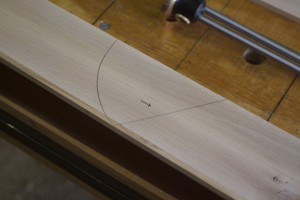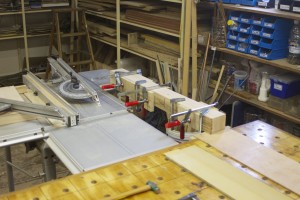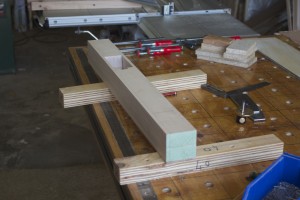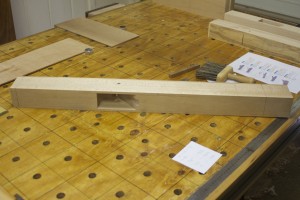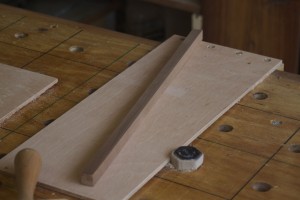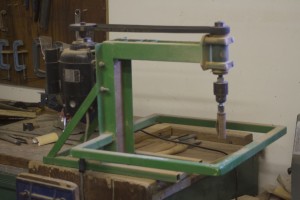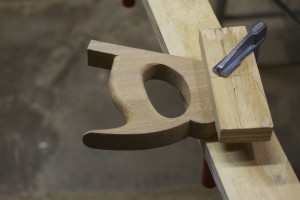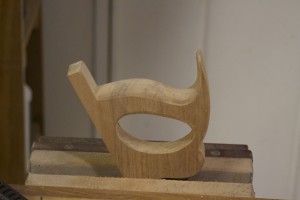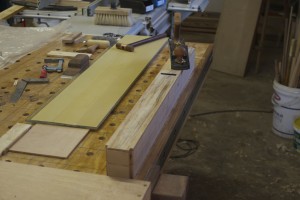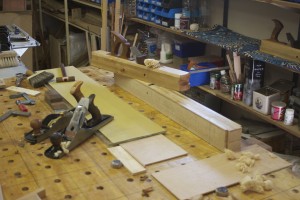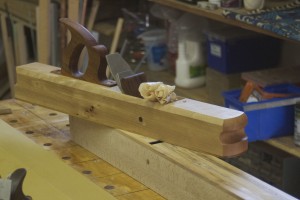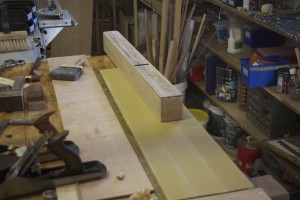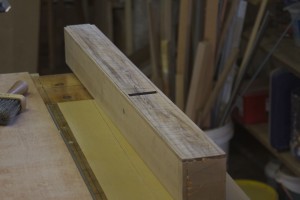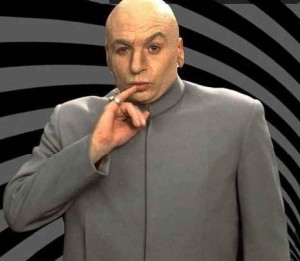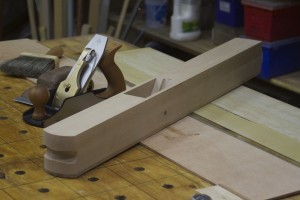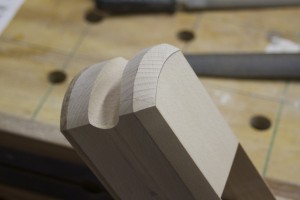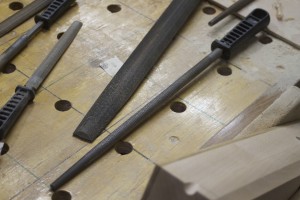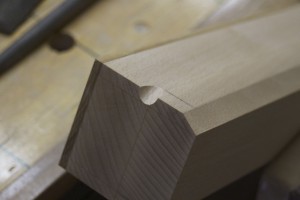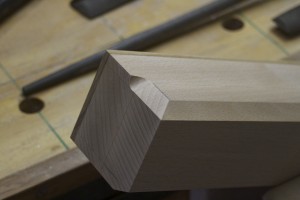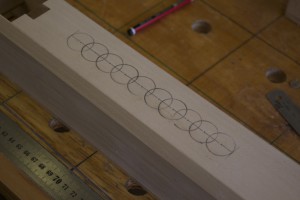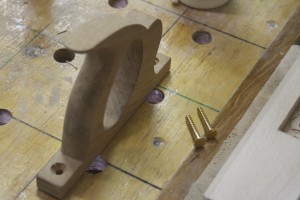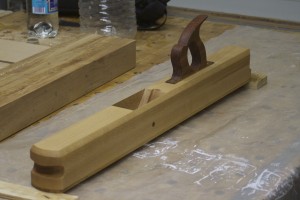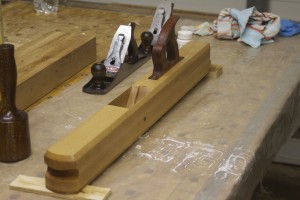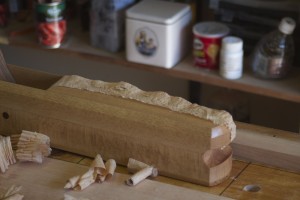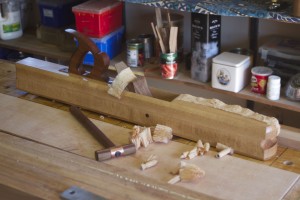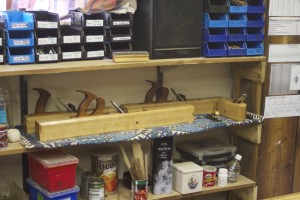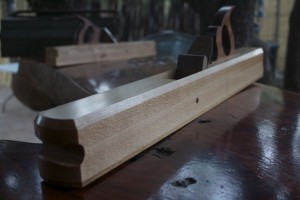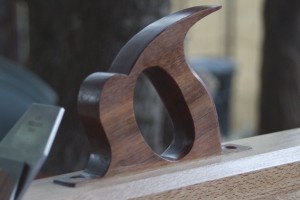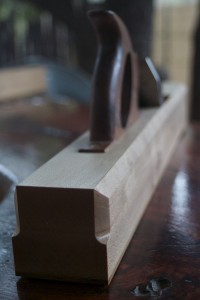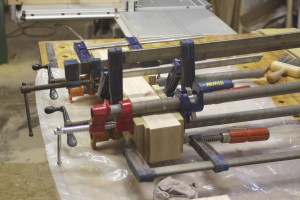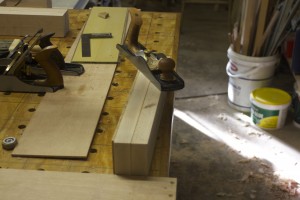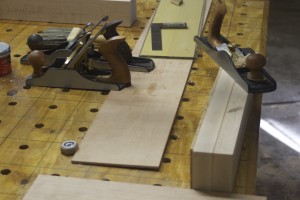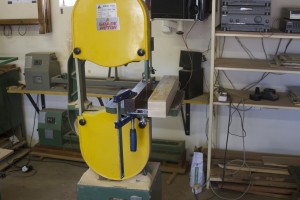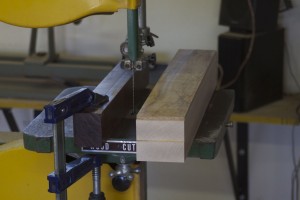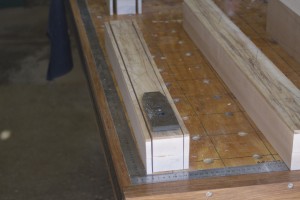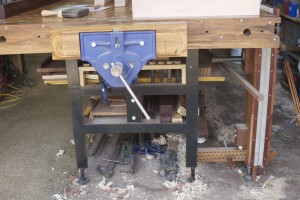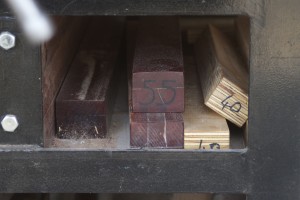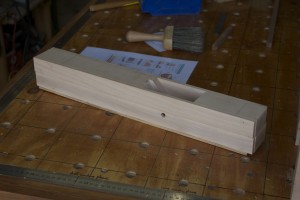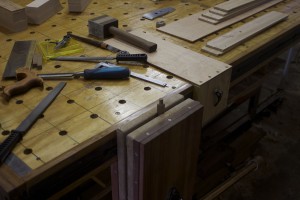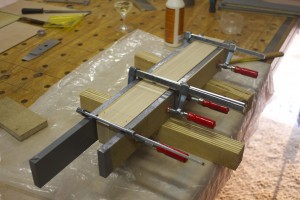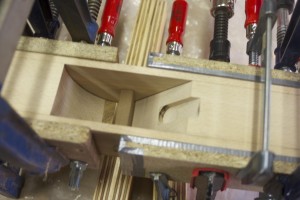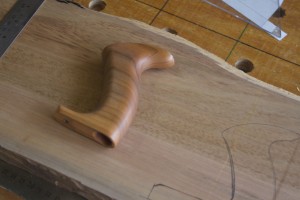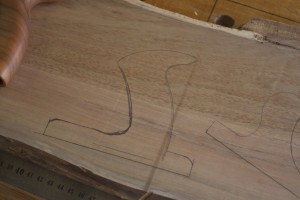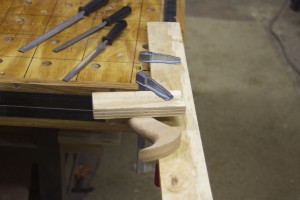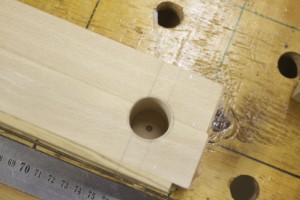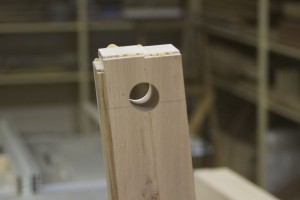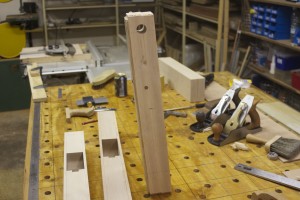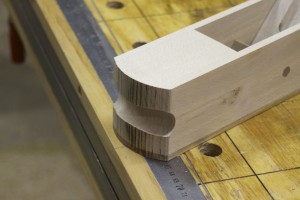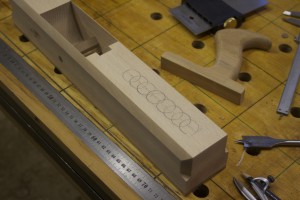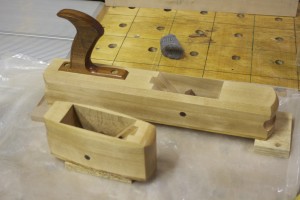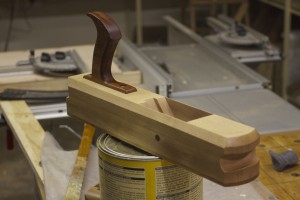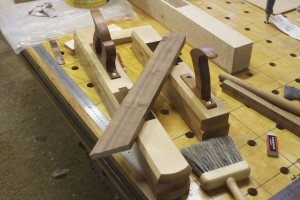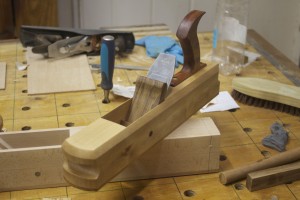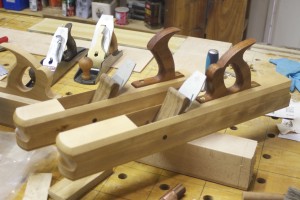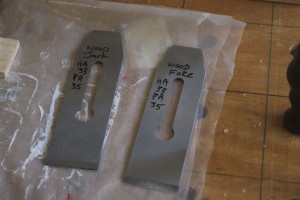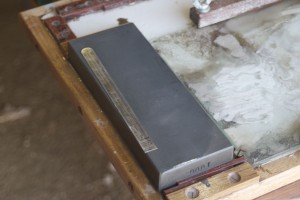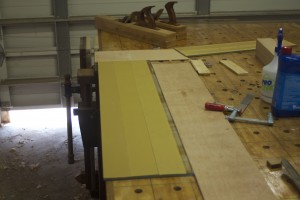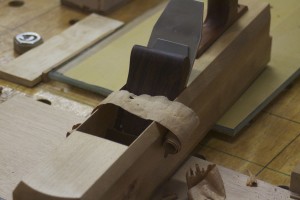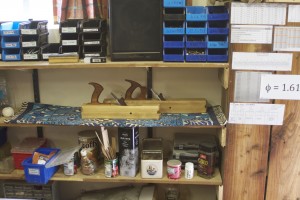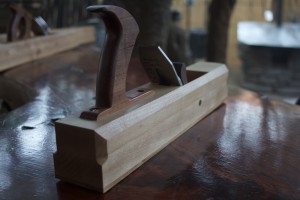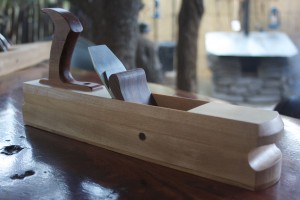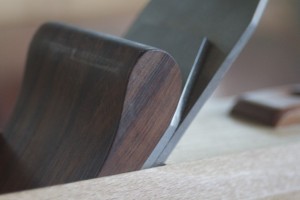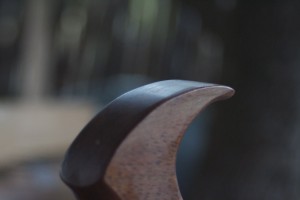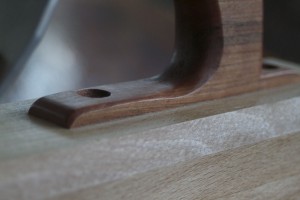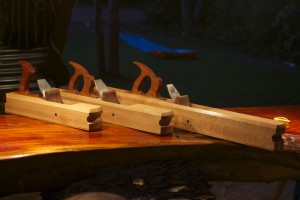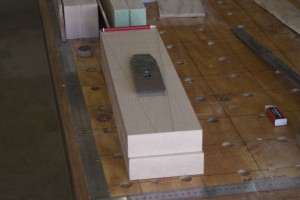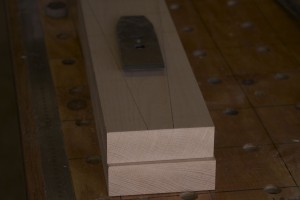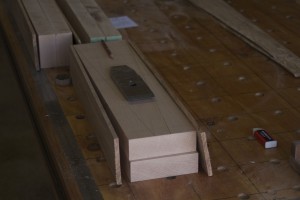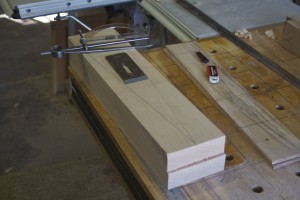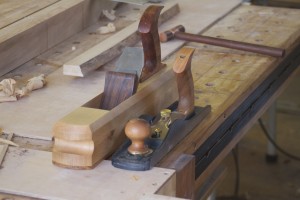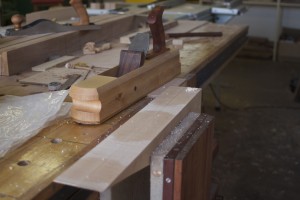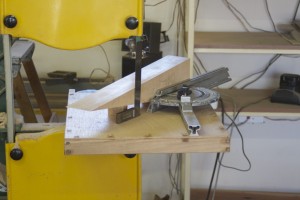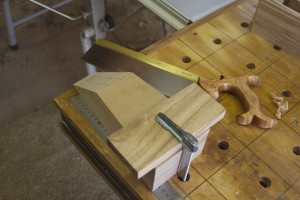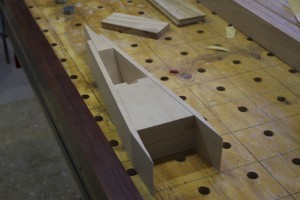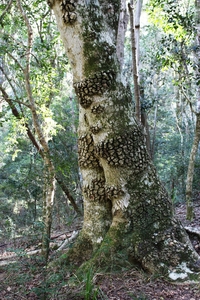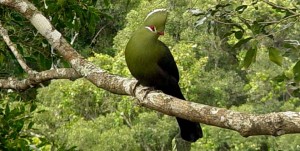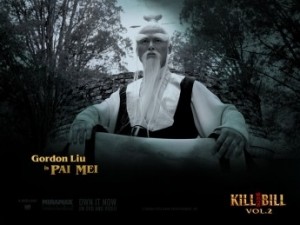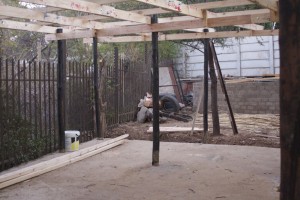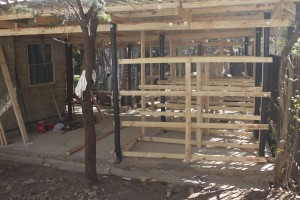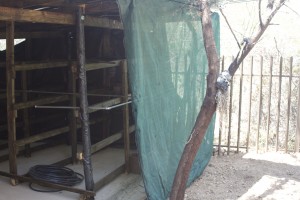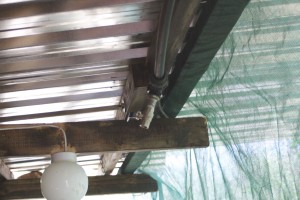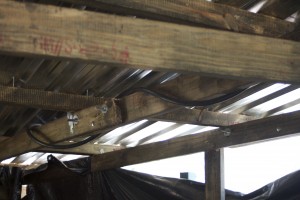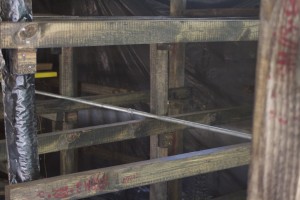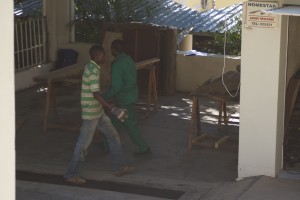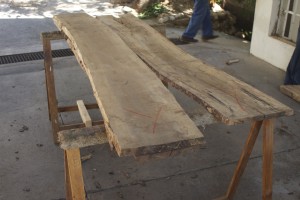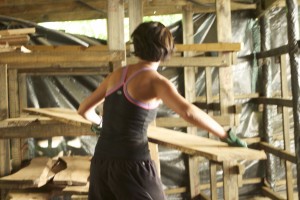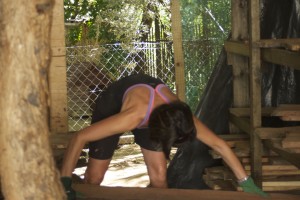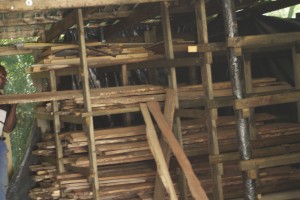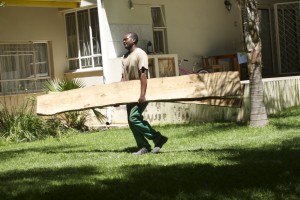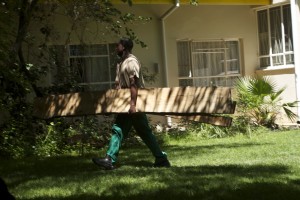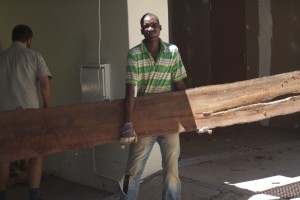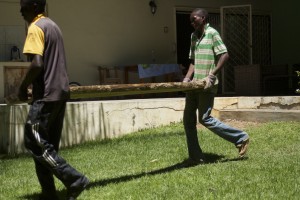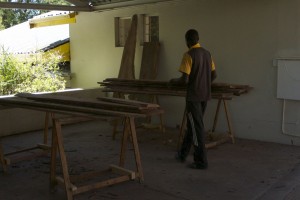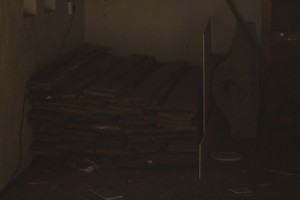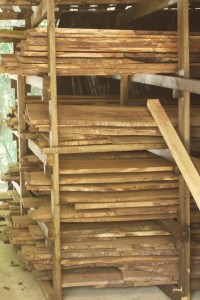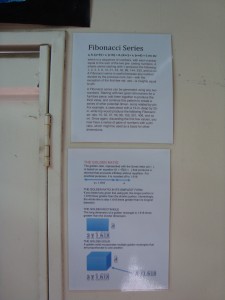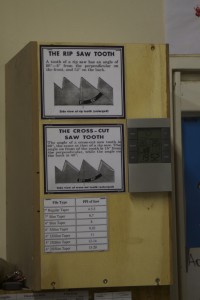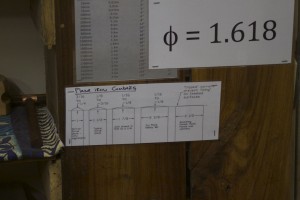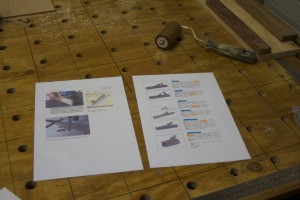28/8/2013 – As described ad infinitum in posts with similar titles, I am building several wooden planes at the same time. This one is a Jointer and will have several photos that co-occur in the other mentioned posts. For the sake of the mortals who only read this particular post I will endeavour to try and keep each post fairly comprehensive at the risk of boring those who peruse all of the plane-building-musings.
I did start building this plane together with the others, so the date above refers more specifically to when I stated documenting this plane’s progress.
I took the wood needed to laminate the blank for this plane from the two beech boards below.
The ysterhout sole of the plane came from this piece of ysterhout, which was re-sawn on the bandsaw and then tidied up by means of the thicknesser.
Here you can see the beech and ysterhout stock prior to lamination.
A quick picture of the stock of the other planes that were built in conjunction with this Jointer.
The gluing process to laminate the above parts.
I used the array of planes pictured below to establish one flat surface on the side of each of the plane blanks, as I do not have a Jointer. In the last two pictures you can see the difference between a jointed side and an untouched side. Please note the use of my home made Flush Plane to remove the hardened glue from the glue lines before employing the other planes. I wrote an entire post on how I made this plane which you will find under the category of “Hand tools” on this site.
I removed the saw marks from the sides with the thicknesser.

At this point I was able to utilise my bandsaw mitre-sled to cut the ramp and curved toe section. I wrote an entire post on how I built the bandsaw mitre-sled, which you will find under the category “jigs” on this site. It is important to keep the wedge created by these two cuts. It comes in handy later on as I will illustrate. I decided on a 50° degree bedding angle (also known as York Pitch) for all of these planes. It is the best all-round angle for my purposes working predominantly with very hard woods.
The curved cut on the toe section was tidied up by means of the Green Monster.
The first place where the wedge-offcut comes in handy is when you need to square up and flatten the ramp on the heel section. In order to prevent blowout of the ysterhout sole one can clamp the wedge together with the heel section as shown. Then you can go ahead and plane the ramp with confidence.
The ramp after planing.
After planing the three ramps I scribbled on them with a 2B pencil and did the last of the flattening on glass with 3M adhesive-backed sandpaper on it. It seems to me that one should not overdo this step as it is easy to round off the edges if not very careful. As soon as all the pencil marks disappear you have done enough.
I thought I should quickly show you these delightful Kershout beams I made many moons ago. They are kept quite handy in the location as shown below my bench. You will notice that their have their length indicated to help me find the exact contrivance needed in a particular situation. In this case I used the Godfather of the beams (at around 1.7 meters in length) as a fence to align the plane parts as shown. This process entails the marking out of the centre-heel piece relative to the centre-toe piece and pinpointing the location of where to drill the first hole for the cross-pin.
After a final dry-fit I usually go ahead and glue the plane together, but not in this case as it was at this point where I luckily (although it did not feel that way at the time) realised my mistake in measuring out the location of the cross-pin holes. There were no space for a wedge and a blade as I did not include the thickness of the blade in my measurements!!!!! This is one of those horrible feelings in woodwork when it hits you like a ton of bricks that you made a stuff-up that might mean all the effort so far was in vain. I usually start sweating and develop acute palpitations, as I did in this case as well.
After I managed to calm down I realised that I could simply move the heel section back by the thickness of the blade-chipbreaker combo to fix the problem. The only real side-effect of my indiscretion after the fix was that I now had a much wider mouth/throat opening than initially intended. On these planes I was not too concerned about that so it worked out fine in the end. You can see the glue-up process in the pictures below.
The Jointer after it was liberated from the clamps.
I found the template below for a closed tote at http://www.oocities.org/plybench/handle.html. As you can see I tweaked it slightly to suite my purpose and sense of je ne sais quoi.
The template I created from the original was then used with consideration of grain orientation to draw the outlines on a piece of Assegaai.
I first drilled out the tight corners on the drill press using Forstner bits of various sizes and then used the bandsaw to finish the job.
I then did the initial shaping with the Green Monster (pictured), after which I used the setup as shown to do the final more delicate work with files.
9/9/2013 – You will not believe how satisfying it was to use my wooden Fore Plane to flatten the sole of the jointer. I used a Lie-Nielsen Low Angle Jack Plane with a toothed blade (bedding angle 12º and secondary polished bevel at 45º resulting in a 57º angle of attack) and the Fore Plane with it’s 50º angle of attack and smooth cambered edge in tandem for this job. At 24″ in length the Fore Plane really helped to do a good job of flattening the 35″ (at this stage) Jointer.
The next step as per usual was to finish off the first flattening on 3M adhesive-backed sandpaper on glass.
22/9/2013 – Then I moved on to establishing the final dimensions of the plane by chopping of the waste at the toe and heel.
In the pictures below you can see how I marked out the guiding lines for the final shaping of the nose of the plane. I first used this design on the scrub plane I built. You will find an entire post on this project under the category “Hand tools” on this site. I find it an absolute gem of a design and it certainly attains my goal of building objects that are functional and beautiful at the same time. Otherwise known as a certain je ne sais quoi. I would therefore like to call this … wait for it … “The Marx Nose”.
Yes I know …
In the pictures below you can see how I shaped “The Marx Nose” using a Forstner bit and the bandsaw. Please feel free to use it, as long as you also call it “The Marx Nose”. Feel free to contact me and I will give you an idea of the proportions I used. It really feels extremely comfortable and natural while using the plane. Your left palm (if you are right-handed) rests on the top of the toe section, enabling easy and controlled downward pressure and your fingers curl into the rounded slot of the nose to improve the ability to pick the plane up for the back-stroke. It really feels so much better than a cast-iron and normal square-nosed 18th century wooden plane.
2/10/2013 –
The chamfers on the sides were done with this Lie-Nielsen low angle block plane. I used my beautiful little smoother to do the final finishing. The top edge of this chamfer runs along the glue line where the sides were glued to the centre sections, in order to hide it. This works very well. You will notice that it is not a 45° chamfer as it extends further down the plane than across the top. I find that this adds a certain je ne sais quoi.
Where the chamfer extends across the front of the nose I used files as this is a curved surface with end grain.
For the stopped chamfers at the heel end, I follow the procedure as illustrated stepwise in the pictures below. I first use a round file to do the end of the chamfer and then clamp a bit of scrap wood over the end to protect it. Next I used a selection of flat files to remove the rest of the wood.
The pictures below show how I shaped the Fore Plane I built but as you can see in the next set of pictures it is exactly what I did with the Jointer.
In these pictures you can see how I fitted the closed tote that we modified and made a bit earlier.
Finally the jointer is starting to resemble what I was aiming for. Here you can see it after a few treatments of tung oil initially followed by something called Wooddock. I am not too sure what it is made up of but it is very similar to Shellac.
7/10/2013 – This past weekend I managed to finish this beautiful Jointer. I made a wedge out of Tamboti to match the other two similar looking planes. The blade was sharpened with a flat edge apart from clipping the corners to prevent it from cutting tracks. You can see the waver thin shavings it took on it’s first cut.
Here you can see it with it’s brothers on the shelve next to the area dedicated to planing on my assembly table.

